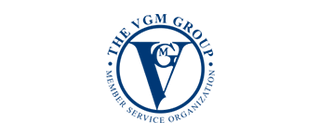Blog
How Henna and Nail Polish Alter the Oximeter Readings
-
Posted On 2018/12/31
-
 Written By Amanda
Written By Amanda
The accurate readings of an overnight pulse oximetry test play an important role in better health care. Find out how henna and nail polish can affect it negatively.
Uses and Limitations of Pulse Oximetry
-
Posted On 2018/12/17
-
 Written By Amanda
Written By Amanda
Pulse oximeter has many uses and some limitations. It’s imperative to know both for more refined medical practices. Read on to find more about them.
Factors That Could Affect the Readings of an Oximeter
-
Posted On 2018/12/03
-
 Written By Amanda
Written By Amanda
Pulse oximetry is a commonly used, non-invasive device for observing and reading the oxygen saturation in the blood. It was first introduced by the Nihon Kohden Corporation in 1970’s. At first, its uses were limited to the operating room but steadily it became more commonplace in other parts of health care as well. Today it is a standard part of every healthcare facility as well as emergency health transportation services.
Non-invasive and invasive Vent - Medicare Competitive Bid Update
-
Posted On 2018/11/26
-
 Written By Amanda
Written By Amanda
“We had no inkling they would expand the product categories at all, let alone to ventilators,” said Kim Brummett, vice president of regulatory affairs for AAHomecare. “It’s a risky thing to put in competitive bidding because you don’t know if patients will have access to these devices.”
Making Diagnosis Easier With Pulse Oximetry
-
Posted On 2018/11/13
-
 Written By Amanda
Written By Amanda
With an overnight pulse oximetry testing, not only is it determined whether a patient is suffering from any sort of heart defect it also helps with determining the certain kinds of defect the patie...
Rules for IDTFs / Medicare
-
Posted On 2018/10/07
-
 Written By Amber
Written By Amber
The guidelines and rules for Independent Diagnostic Testing Facilities under Medicare function independently rather than being a part of a hospital or of any attending or consulting physician.
Screening through Pulse Oximetry
-
Posted On 2018/09/27
-
 Written By Amber
Written By Amber
Pulse oximetry, on the other hand, works on a simple technology that is easy to administer and interpret. It also gives the advantage of cost saving and portability.
Pulse Oximetry is Everything You Need to Screen Sleep Apnea
-
Posted On 2018/09/27
-
 Written By Amber
Written By Amber
According to one study, measuring the ODI with overnight oximetry testing is a less expensive and effective method to screen for sleep apnea.
Overnight Oximetry Testing
-
Posted On 2018/09/19
-
 Written By Amber
Written By Amber
Sometimes, it is required to observe the oxygen saturation in a patient’s blood throughout the night. For this purpose, overnight oximetry testing is carried out.
Sleep Disorders and Overnight Oximetry
-
Posted On 2018/09/18
-
 Written By Amber
Written By Amber
Overnight pulse oximetry is a test that can be done at home and provides simple information that the doctor can then use to evaluate your sleep health.
Medicare Coverage of Home Oxygen
-
Posted On 2018/09/04
-
 Written By Amber
Written By Amber
People suffering from hypoxemia are thought to have a suitable and facilitative healthcare option of home oxygen supply which is taken care of under Medicare provisions, particularly under the durable medical equipment benefit.
Hypoxemia and Hypoxia - You are in Danger within Minutes
-
Posted On 2018/09/01
-
 Written By Amber
Written By Amber
Keep a pulse oximeter with you at all times and keep a check on your blood oxygen saturation level and heart rate. It is very helpful to quickly detect any alarming or abnormal changes.
- Previous page
- Page 2 of 3
- Next page




